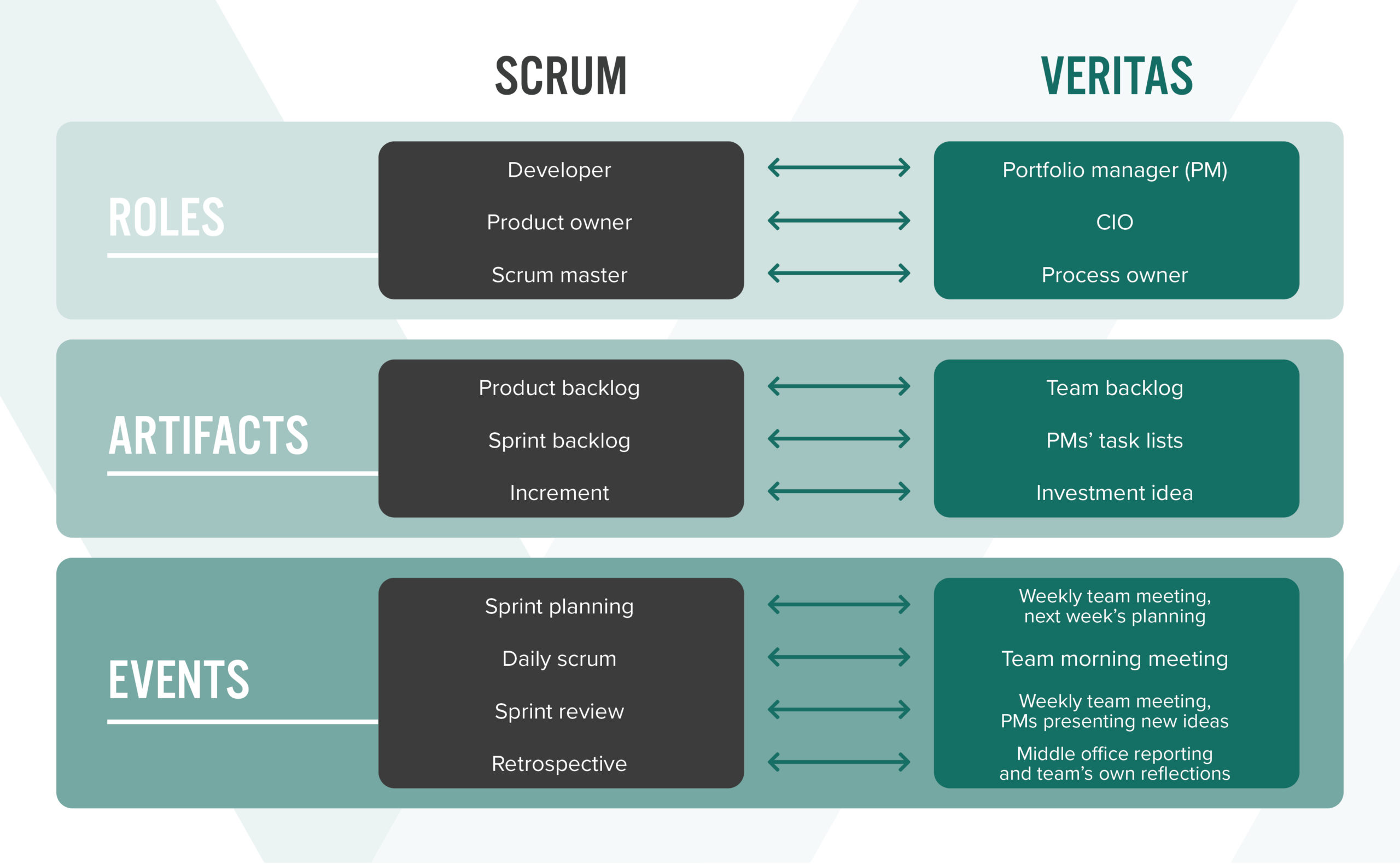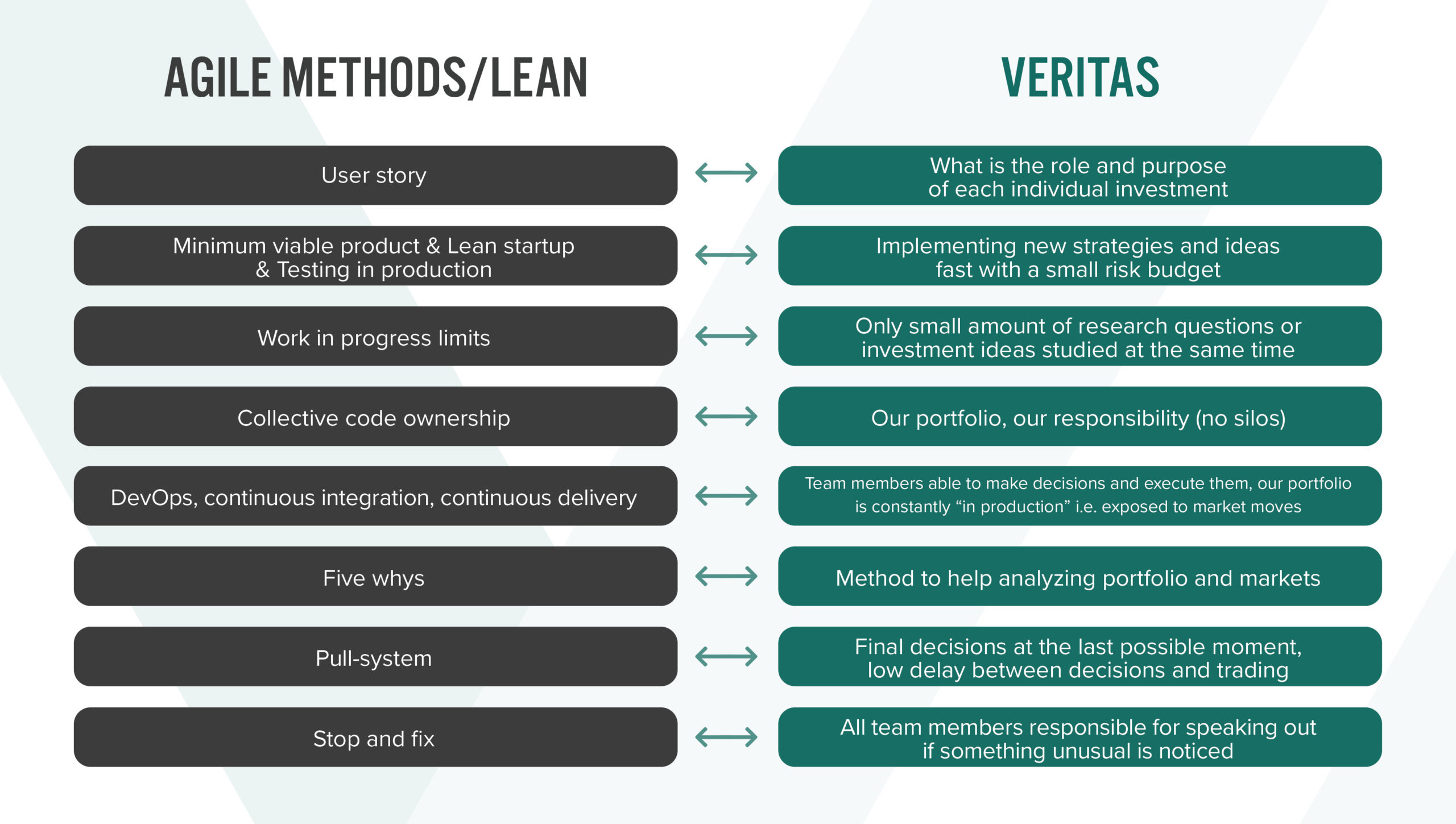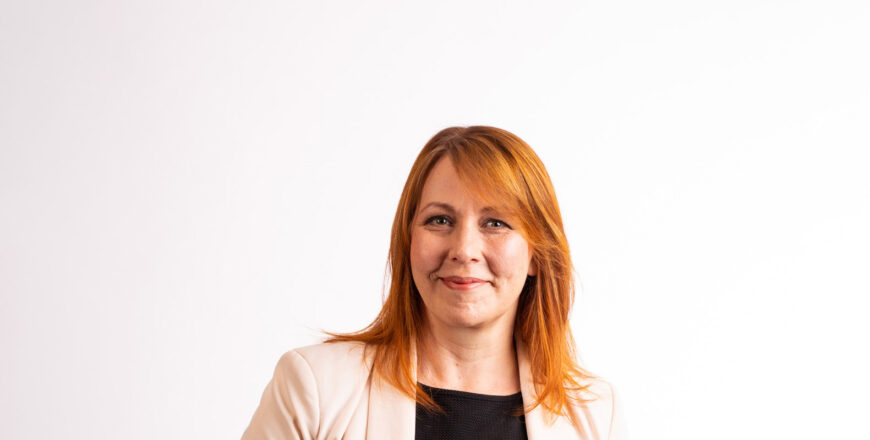Lean, originally developed by Toyota Production Systems, has reached public awareness over the last few decades and lean doctrines have been widely utilized in operational process development. Would it be possible to implement lean thinking in decision-making as well? We at Veritas’ investment team decided to test this idea in the summer of 2020. We realized we could learn from programmers who have taken lean thinking and its practical implementation exceptionally far.
It is all about lean
‘Agile Methods’ is an umbrella term for many different software development methods. The core idea of agile methods based on the lean philosophy is to improve and adapt both the product and work process as the environment or requirements change. The most popular agile software development method is called scrum.
A scrum team with less than ten members with the same title (developer) succeeds and fails together. The team itself decides who will do each task in hand. There are no bosses in scrum. The scrum team works in sprints of 1-4 weeks. During the sprint, the team will implement new features that are included in the sprint. A prioritized list of all planned future functionality is called a backlog. Anyone can add new items to the backlog, but the product owner alone decides priorities. The backlog is maintained, or groomed, continuously and it serves as the basis for the work of the scrum team.
Each sprint involves a series of meetings, or events. In sprint planning, the team takes highest priority features from the backlog. In daily scrum meetings, the team ensures that the general direction of the sprint is good, and there are no obstacles impeding the team’s progress. In sprint reviews new features are presented for bigger audience and finally in retrospective the team reflects together and tries to learn to work even better together going forward. As you may already notice from the nature of these meetings, scrum strives for transparency as well as the continuous improvement of both the product and the teamwork.
Surprisingly flexible scrum
In the Veritas’ investment team, although we took a lot of inspiration from the broader agile tradition, we chose scrum as the body of our operating model. It’s amazing how straightforward a match we managed to find between scrum, originally developed for software production, and our own needs. The following figure outlines this analogy:

Our portfolio management team has eight portfolio managers with no mutual hierarchy. The CIO prioritizes our work through the backlog and the process owner ensures that the principles of scrum are followed. The team backlog includes all investment ideas prioritized, and so on. We have also brought other principles and ideas from agile software production into our portfolio management work:

Our experiences of agility
How then has our everyday work changed since we started applying scrum and agile principles in the summer of 2020?
First, the introduction of backlog has been revolutionary. No longer are investment ideas or process enhancements forgotten just because they are not highest priorities at the very moment, as they hang in the backlog with a lower priority until they are either implemented or rejected. We have also begun to test new investment strategies faster in production i.e. with real money, because on the drawing board it is impossible to identify all the practical challenges and opportunities that the real market provides. In addition, we have started to identify different kinds of roles our investments have in our portfolio. The individual asset must always serve a clear purpose. It is not a good reason to keep something in the portfolio just out of habit, just like it is not rational to add new features to the software if they are not creating value for end users. On the other hand, we have ensured that portfolio managers do not have unnecessary operational obstacles in implementing investment ideas.
There are plenty of other examples, but perhaps the biggest benefit from the introduction of scrum has been that now we are talking about lean within our team. Thanks to scrum and other agile software production principles, we now have a good framework which helps us to enhance our portfolio and our way of working one step at a time.
Of course, one must remember that we are not a software development team. We have shaped a more suitable version of scrum for our needs. The focus of development is not just the software, or in our case the investment portfolio, but also the process itself. Processes are only a tool in value creation and have no intrinsic value.
Hopefully our example will serve as an inspiration to others as well. It is quite possible that the best practices in your team are not found from programmers, but from some completely different direction. The most important thing is to be agile: try and fail boldly. You can and should change the direction along the way, but it’s important to hit the road right away. Agilely like a programmer.





